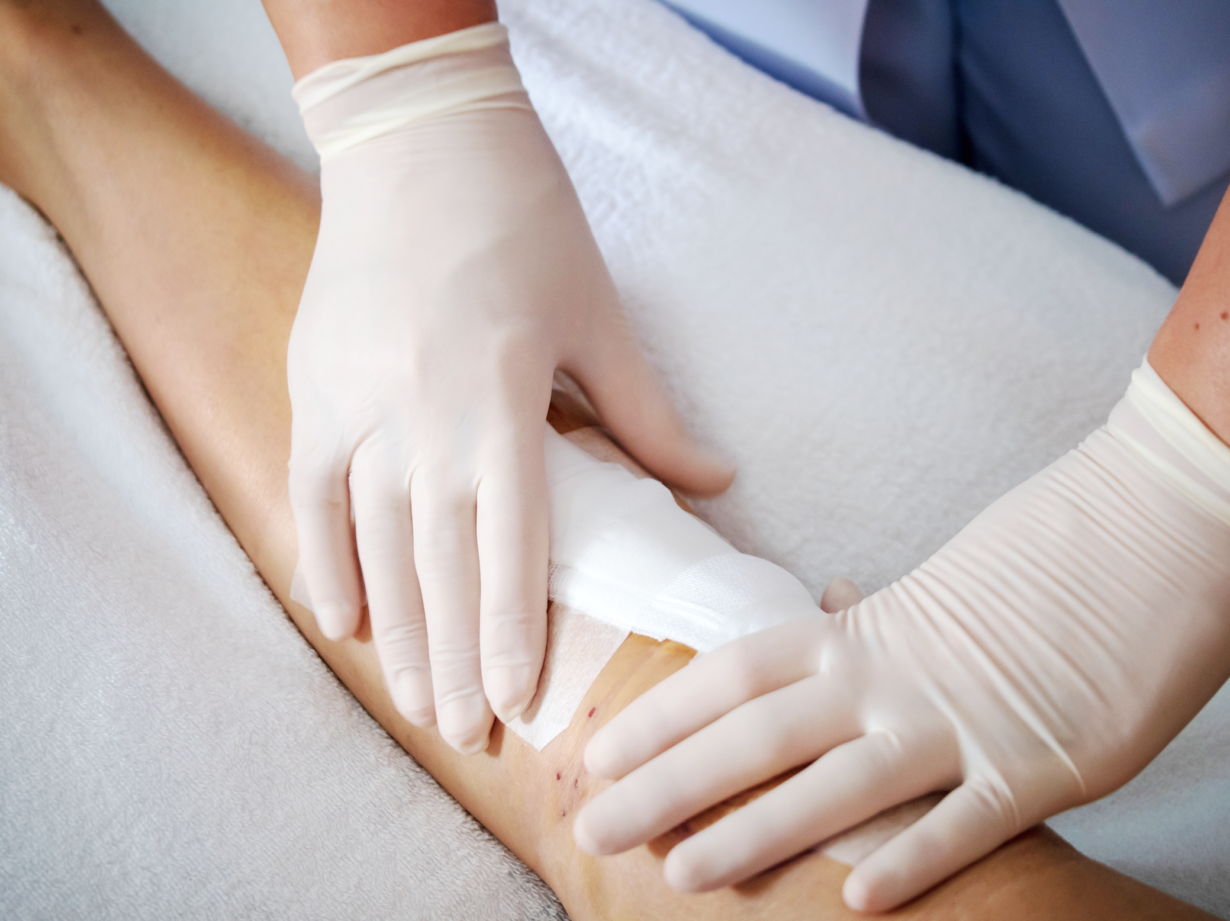What is Dressing Change Large
A dressing change for a large area is a medical procedure performed to replace an existing wound dressing to promote healing, prevent infection, and protect the wound from further irritation.
This procedure is essential for post-surgical wounds, burns, chronic ulcers, or large traumatic injuries. Proper wound care ensures a clean environment, reduces discomfort, and accelerates tissue regeneration.
Things you should know before the treatment
- A healthcare professional may assess the wound before changing the dressing to monitor healing progress.
- The procedure should be performed in a clean and sterile environment to reduce the risk of infection.
- Patients with chronic wounds, diabetes, or slow-healing conditions may require specialized wound care products.
- Mild discomfort or sensitivity may occur during the dressing change, especially if the wound is deep or healing.
- Depending on the wound type, different dressings such as hydrocolloid, foam, or gauze may be used.
What happens during the treatment
- The old dressing is carefully removed, and the wound is examined for signs of healing or infection.
- The wound is cleaned with a sterile solution or an antiseptic to remove debris and bacteria.
- A fresh, appropriate dressing is applied to protect the wound and promote healing.
- The dressing is secured with medical tape or bandages to keep it in place.
- The procedure typically takes 15-30 minutes, depending on the wound’s size and condition.
Recovery and results: What to expect
- Patients should follow the healthcare provider’s instructions on wound care and activity restrictions.
- Keep the dressing dry and clean, and avoid unnecessary pressure or friction on the wound.
- Mild redness or drainage is normal, but any signs of infection (increased pain, swelling, pus, or fever) should be reported immediately.
- Regular dressing changes may be required until the wound heals completely.
- Proper nutrition, hydration, and hygiene can support faster healing and reduce complications.
